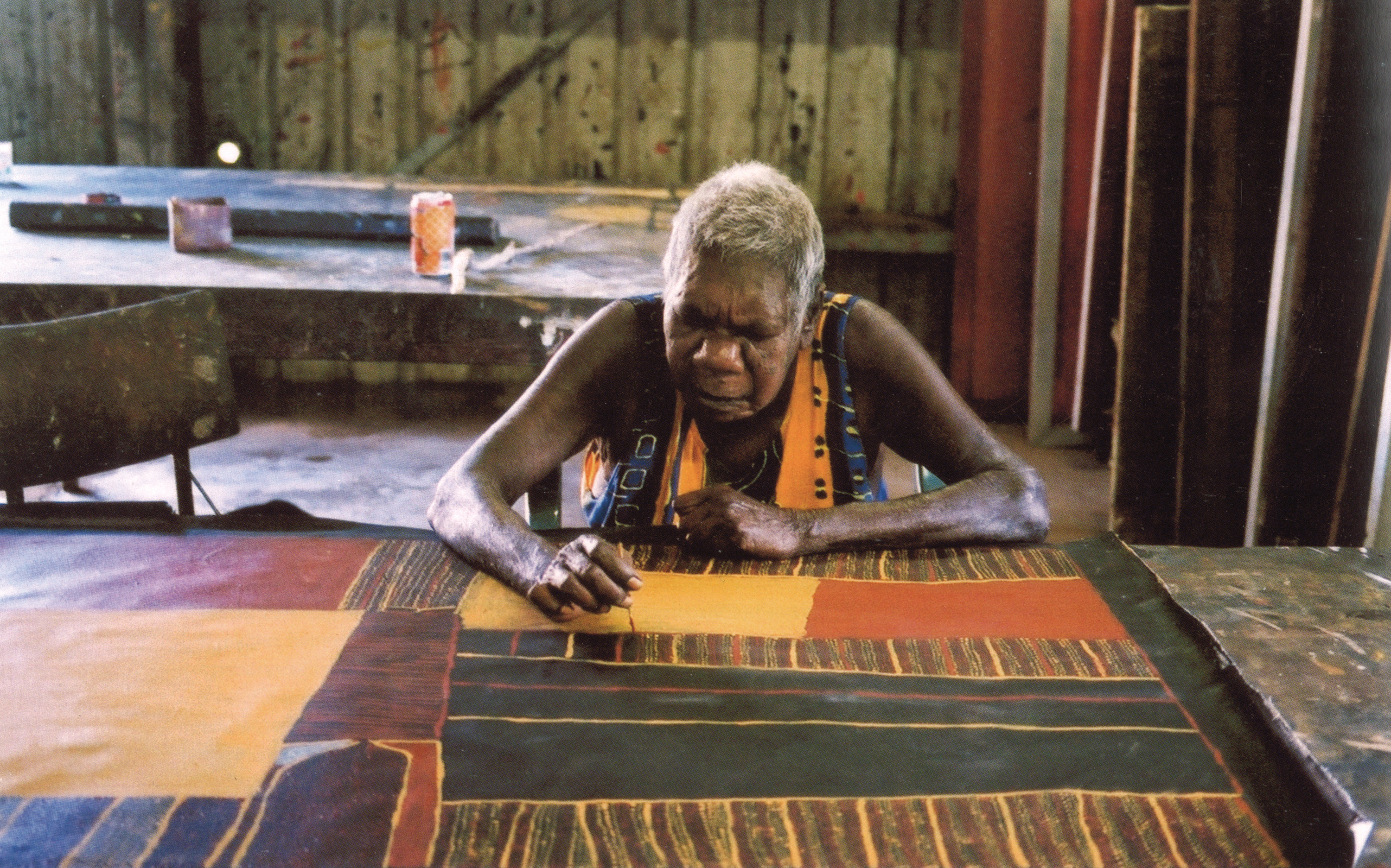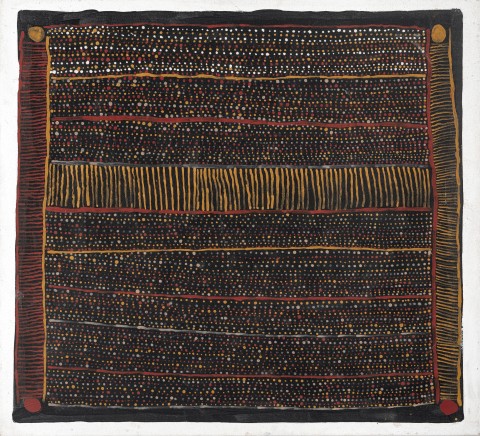UNTITLED, 1997
KUTUWULUMI PURAWARRUMPATU (KITTY KANTILLA)
natural earth pigments and synthetic binder on canvas
71.0 x 78.0 cm
bears inscription verso: artist’s name and date
Jilamara Arts and Crafts, Milikapiti, Melville Island, Northern Territory (stamped verso)
Aboriginal and Pacific Art, Sydney
Private collection, Sydney
Sotheby’s, Melbourne, 22 November 1999, lot 410
Private collection, Melbourne
Sotheby’s, Melbourne, 26 July 2004, lot 223
Private collection, Sydney
Artist-working-dh230052.jpg

‘I will paint until the day I die.’1
‘Kitty Kantilla was one of Australia’s most remarkable Indigenous artists, celebrated for her innovation, unique style and mastery of a range of mediums... She produced an extraordinary body of work from the 1970s until her last days in 2003. In her hands the magic of Tiwi culture was translated into works of international significance.’2
‘Her poetics of intimacy taught the art world that quality is not contingent upon scale. Her means were few: she needed only dots, lines and ochre colours to create infinite variations of rhythm, balance and beauty, of which no two are exactly alike. Kantilla’s works, like those of early European modernists, do not map space or tell a story, but radically affirm the painted surface and thereby guarantee the autonomy of art. Yet the power and inwardness of Kantilla’s innovative art hinges on its deep resonance with customary ritual. For the viewer, Kantilla’s inescapably modern works are also highly charged with ceremony, with something spiritual and untouchable.
Kantilla’s sophisticated form of abstraction eludes explanation in terms of narrative because she strenuously pursued her art from deep within her culture. By painting, Kantilla was also singing and dancing: she sensed and invoked holistically, through a special music of natural ochre and design, the decorated objects, the painted dancers and their kinetic movement, the percussive rhythm and dynamism of ceremony. This was her Tiwi-ness, her identity: it drove her to make art and was her special form of activism; painting was central to her identity...’3
1. Kantilla, K., quoted in Ryan, J., ‘Kitty Kantilla’, National Gallery of Victoria, Melbourne, 2007 at http://www.ngv.vic.gov.au/kittykantilla/background.html
2. ‘KITTY KANTILLA’, Art Gallery of New South Wales, Sydney, 2007 at http://archive.artgallery.nsw.gov.au/media/archives_2007/kitty_kantilla/
3. Ryan, op. cit.
